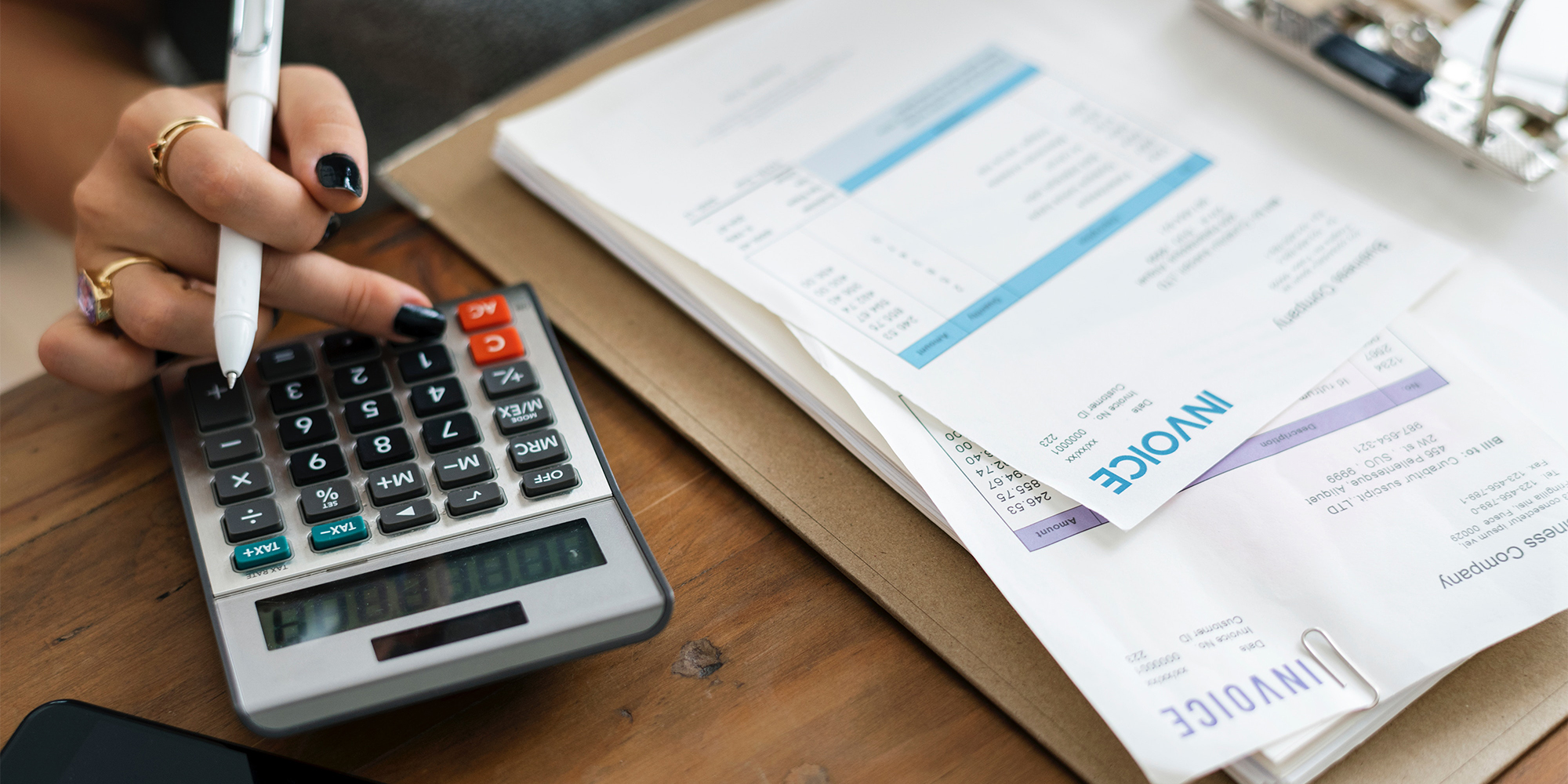It’s the most wonderful time of the year – it’s tax season!
Just kidding, it’s miserable, especially for our fellow freelancers out there. However, it doesn’t have to be stressful! Below, we will break down taxes for the self-employed as well as provide some basic tips and suggestions to minimize your taxable liability.
Disclaimer: this was written by a designer, not an accountant. This particular designer still second guesses herself when writing her phone number. That’s not even math, people. Those are just numbers. For expert advice on all things tax, we highly recommend seeking a reputable tax accountant to better customize your tax assessment.
Phew, now that that’s out of the way. Y’all ready for this? *cue Space Jam soundtrack*
 Photo by rawpixel.com from Pexels
Photo by rawpixel.com from Pexels
Self-Employment Tax
There are endless perks to being a freelancer: flexible hours, no commute, canine coworkers, and you’re your own boss. That last benefit is a double-edged sword; being your own employer is great, that is until you factor in taxes.
In order to file your incomes taxes, you use a 1040 form. Whether you’re operating as an LLC or a sole proprietor, you would attach a Schedule C form. The Schedule C form basically has your business income and takes out the deductions applicable to get your net income for you and your business.
If you have an employer or a staffing agency who sets you up as a W2, your life is a little easier. Essentially, taxes are withheld from your paycheck throughout the year on a W2. Typically for freelance, most of your clients would request your information for a W9 for them to be able to send you a 1099 for a contracted job. On a 1099, no taxes are withheld. This means you have to consciously pay taxes throughout the year to the federal and state government (depending on the state). Confused yet? Our sponsors at Artisan Talent have a great video discussing this a bit more as well as explaining how staffing agencies can ease the strain of taxes. Check it out here.
When you’re self-employed, you’re entirely responsible for your taxes sent to Uncle Sam. This includes self-employment tax. In a typical job working for another company, an employer contributes to half of your Social Security and Medicare taxes, and the remaining percentage comes from you, the employee. It’s withheld from your paycheck each pay period along with federal income tax as well as state and local income tax.
When you’re your own boss, you pay both the employee and employer sides of Social Security and Medicare tax, i.e. the whole 15.3%. This is all in addition to your state and federal income taxes, which varies based on which tax bracket you fall into individually. On average, that equates to roughly 30% of a freelancer’s income paid into taxes. This is why it’s tricky to do freelance. Some refer to it as paying double tax. In an effort to be positive, think of it as paying in full alone instead of sharing taxes with an employer. Nevermind, it’s painful either way. I tried.
 Photo by Bruce Mars from Pexels
Photo by Bruce Mars from Pexels
Quarterly Taxes
As we mentioned before, taxes are taken out with each paycheck for a normal 9-5 job working for someone else. When you freelance, you should be paying taxes quarterly. A tax accountant can give you an appropriate estimate of what you should pay based on your individual needs. In general, quarterly taxes should add up to be around that 30% of your expected income at the end of the year. Paying quarterly taxes will help you keep your finances straight and Uncle Sam happy. If you do not pay quarterly, you can still pay your taxes at tax time. Beware, you will be hit with a penalty for not paying quarterly. No one likes to go a year without being paid, and the government has the ability to penalize you for it.
 Photo by rawpixel from Unsplash
Photo by rawpixel from Unsplash
Deductions
So at this point, your soul is crushed. You’ve called your mom crying because taxes are insane, and also to see if she can schedule an appointment with a tax accountant for you. Fear not, my friends. Deductions make things better. Simply put, a deduction lowers the amount of income you have to pay taxes on. For instance, you make $50k a year. But you have to provide your own office supplies, and it costs you $5k a year. You have an unhealthy obsession with high quality pens, we’ve all been there. The money you spent for office supplies can be deducted from your $50k income, so now you’re only taxed on $45k.
Below are some of the most common deductions and how to properly use them. The important thing to remember is anything you spend money on to conduct or better your business, you can probably deduct from your taxable income. Before deducting these on your own, we advise you consult your tax accountant to make sure they are appropriate for your given situation.
- Office Supplies: everything from pens to paper and beyond.
- Domain and Web Hosting: you pay for that website to offer and showcase your skills, deduct it!
- Technology: phone, computer, printer, any sort of technology or equipment purchased solely for your business to operate.
- Car Mileage: if you travel to meet all of your clients, your tax accountant can guide you on how to deduct that.
- Insurance: you have to pay for it yourself, but at least it’s tax deductible.
- Advertisements: if you took out a billboard ad to announce your services, keep that receipt because that’s a write-off.
- Memberships: if you are apart of professional organizations that further your business and development, membership dues may be tax deductible. For instance, if you were a member of *ahem* AIGA, your membership dues could very well help your tax liability. To sign up to be a member of AIGA and learn more about membership perks, click here.
- Subscriptions: this includes software like Adobe Creative Cloud, Dropbox, etc.
- Accountant: yes, you can deduct the cost of your tax accountant on the next year’s taxes! See, it’s worth it to hire a tax deductible professional.
- Part of Utilities: see Home Office
- Home Office: ok this one is tricky, so pull up a chair. If you work from a home office, there is a way to calculate it as a tax deduction. You can claim part of the square footage so long as the office is solely for your business. Essentially, you calculate the square footage designated “office” and you can use your mortgage or rent payments as a deduction. For example, if you live in a 1,000 sq ft apartment with a designated home office accounting for 250 sq ft, then you would be able to claim 25% of your rent payment a month as a deduction. We double-checked the math and then ran it by an accountant to be sure, so we’re basically mathematicians now. This percentage would also work for your utilities. Again, consult your tax accountant if you choose to deduct your home office expenses.
Make sure you keep receipts for each deduction. These can help you, and your accountant, keep track of your expenses so you can maximize your deductions. You won’t have to submit them to the IRS every year in order to receive deductions, but you will need those receipts should you ever be audited. During an audit, the IRS goes back through your records to make sure your financials were correct for tax purposes. Receipts can help your deduction claims stand. If you lose your receipts for any reason, never fear. We live in a digital era, and more often than not, those numbers can be pulled from credit card and bank statements as needed.
–
We tried to find a tax-related joke to ease the pain and end on a good note, but every joke was so bad we decided you’ve already suffered enough. Federal and state taxes can be extremely complicated, but hopefully this guide has helped clear up some confusion and equip you with some tips and tricks the next time you see your accountant to file your taxes.
Don’t forget- taxes are due April 15th!

Photo by rawpixel.com from Pexels